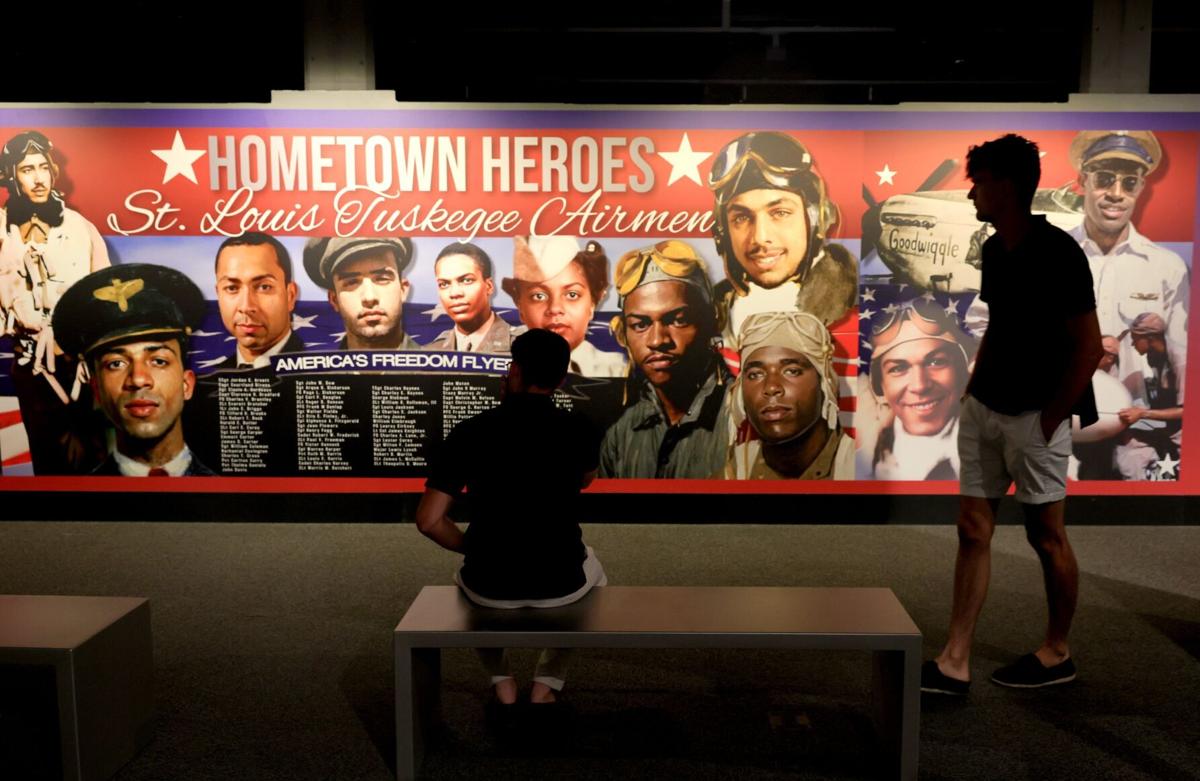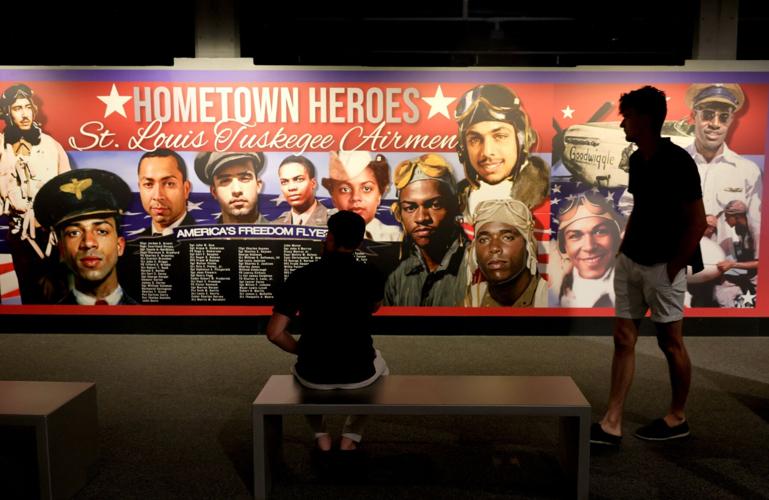In World War II, the fighter pilots of the famed Tuskegee Airmen were given a strict order by their commander, Lt. Col. Benjamin O. Davis Jr.: Always stay with the bombers they were escorting.
The German Luftwaffe would send one wave of their own fighters to attack the American bombers, and the American fighter pilots would often leave the slow and lumbering bombers behind to chase the Germans. Then another wave of German fighters would attack the vulnerable bombers.
But the Tuskegee Airmen did not chase the fighters; they stayed behind to guard the bombers. The all-white bomber pilots and crews began asking for the all-Black Tuskegee Airmen to be their fighter escorts.
ŌĆ£The number of bombers that were lost dramatically went down when (the Tuskegee Airmen) were involved,ŌĆØ says Karl Smith, a member of the Hugh J. White ėŻ╠ę╩ėŲĄ Chapter of the Tuskegee Airmen, an organization dedicated to honoring and remembering the airmen.
People are also reading…

Randy Webb, left, and his friend Rich Dillon, both from St. Charles, look over the Tuskegee Airmen exhibit at the ėŻ╠ę╩ėŲĄ Soldiers Memorial on July 11, 2025.
The Soldiers Memorial Military Museum has a new exhibit about the celebrated airmen, ŌĆ£Tuskegee Airmen: AmericaŌĆÖs Freedom Flyers.ŌĆØ The exhibit, which runs through Nov. 2, shows how they earned the respect of their peers even while facing institutional racism in the segregated armed forces.
ŌĆ£They always say they fought two battles. They fought one overseas and they fought one here in the United States,ŌĆØ says Smith, a retired Air Force lieutenant colonel and an adviser on part of the exhibit.
The Army did not allow Black people into what was then the Army Air Corps until January 1941, when Black instructor pilots were finally brought in to begin training Black pilots. They were based at the Tuskegee Army Air Field in Alabama, which eventually gave them their name.
But they were not always called the Tuskegee Airmen, Smith says. At first, the endeavor was known as the Tuskegee Experiment, because many of the Army brass doubted Black people had the wherewithal to become pilots.
The airmen soon proved them wrong. The 352 pilots deployed overseas flew nearly 1,600 missions, with one of the lowest rate of bombers lost to enemy fire in the armed services. They earned 150 distinguished flying cross medals, 744 air medals and 14 bronze stars.
And they had remarkably few losses of their own ŌĆö just 66 of the airmen died in combat and only 32 were taken prisoner of war.
And yet, they faced racism and discrimination even in the service. Smith says that German POWs being held by the Americans were allowed to go some places that the Tuskegee Airmen were not, because of the color of their skin.
In 1945, a group of Tuskegee Airmen officers stationed at Freeman Army Airfield in Indiana tried to get into the segregated officers club on base. Under the command of Col. Robert R. Selway, they were denied entrance and 101 of them were arrested for mutiny. All were released within a few weeks, although one was convicted of shoving an officer; he was fined and given a dishonorable discharge.
In 1949, what was by then called the Air Force held its first Fighter Gunnery Competition, determining the best crews (itŌĆÖs the ŌĆ£Top GunŌĆØ competition). Four pilots from the 332nd Fighter Group, which was one of the Tuskegee Airmen groups, won the contest.
But for years, they were not officially acknowledged as the victors. For decades, Air Force almanacs left the winners of the 1949 competition blank. The pilots were not officially recognized as the victors until 1995, 46 years after they won the meet.
Just about 1,000 pilots went through the program at Tuskegee, out of 3,000 who applied. While this group was originally designated Tuskegee Airmen, the name has come to include the 15,000 support workers who were responsible for keeping them housed and fed and for getting the planes in the air. A number of women are included in this larger group, and even some white Army personnel.
Part of the exhibit shows ėŻ╠ę╩ėŲĄ-based people who served among the airmen. On one wall is a list of 91 compiled by Smith, though he expects there are more that he does not know about.
Few of the Tuskegee Airmen are still alive ŌĆö including just one pilot who saw action in World War II ŌĆö and they are all over 100. In recent decades, they have been getting their due.
Two narrative movies have been made about them ŌĆö if you want to learn facts, youŌĆÖre better off watching a documentary, Smith says ŌĆö and a commemorative postage stamp was issued to honor chief flight instructor, Charles Alfred Anderson Sr. In 2007, all of the Tuskegee Airmen received the Congressional gold medal, one of which is included in the exhibit.
Despite the constant thrum of racism, at times the airmen found their skin color to be an advantage. One, Alexander Jefferson, was shot down over France on his 19th mission. He was captured by German soldiers and taken to a POW camp in Poland.
There, an American officer requested that Jefferson be housed in his barracks. That particular barracks was used by the Americans to plan escapes, forge documents and the like. The prisoners always feared that German spies were in their ranks, people who had lived in America but moved back to Germany for the war.
The POWs took one look at Jefferson and knew for certain he was not a German spy.
The Red and Black Brass band leads a line of people during a wreath-laying ceremony outside the┬ĀSoldiers Memorial Military Museum on Monday, May 26, 2025.┬Ā










